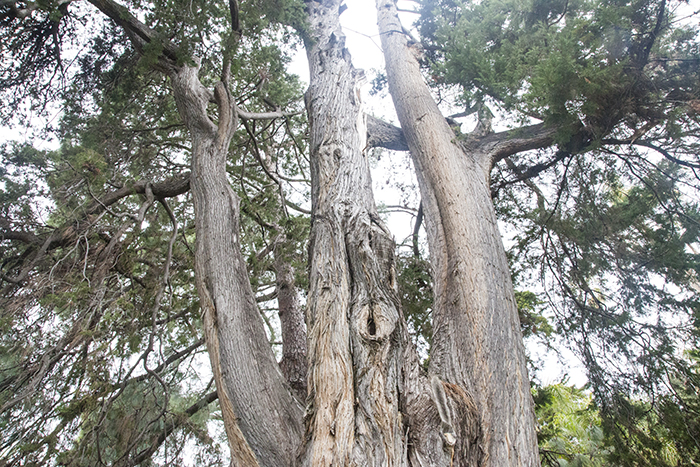Mexican White Cedar
(Cupressus lusitanica)
Capo Mortola, France
A little further on our way there is a magnificent, tall Mexican White Cedar in the Hanbury Botanic Garden at Capo Mortola. This Mexican White Cedar (Cupressus lusitanica) has a circumference of about 5.6 meters and a height of 26 meters. It was planted in 1869 and is therefore exactly 146 years old. The Silent Visit with this tree takes place on 06. February 2015.
Mexican White Cedar at Capo Mortola
 Botanical name: Cupressus lusitanica
Botanical name: Cupressus lusitanica
Location: Capo Mortola, Italy
Coordinates: 43.783377, 7.555077
Circunference: about 5,6 meters
Height: about 26 meters
Age: 146 years (planted 1869)
Healing Effects: antibacterial, antiseptic, expectorant, relieves symptoms of menstruation and menopause, helps with respiratory problems and fever, diarrhea and varicose veins, strengthens clear view and resistibility, vitality and mental balance
- Impressionen: http://tinyurl.com/cupressus-lusitanica-mortola
→ As evergreen lifetree, the cypress is often found in cemeteries!
It’s natural habitat is located in Central America. It grows mainly on volcanic soils on rocky slopes and can thrive at altitudes up to 4000 meters. It is grown in Africa as useful timber wood and is commonly used in Costa Rica as a Christmas tree.
The Cypress has a long tradition as a temple tree and was revered as a sacred tree for millennia. In earlier times ships were constructed out of her ultra-durable wood and manufactured doors and roofs of religious sites.
It’s healing powers are antibacterial, antiseptic and expectorant to relieve symptoms of menstrual and menopause and help with respiratory problems, fever, diarrhea, and varicose veins. The Cypress strengthens clear view and resistibility, vitality and mental balance.
Further insights into the different aspects of the Mexican White Cedar:
Photo Cupressus lusitanica: © http://arboretum.ufm.edu/wp-content/uploads/Cupressus_lusitanica1.jpg







